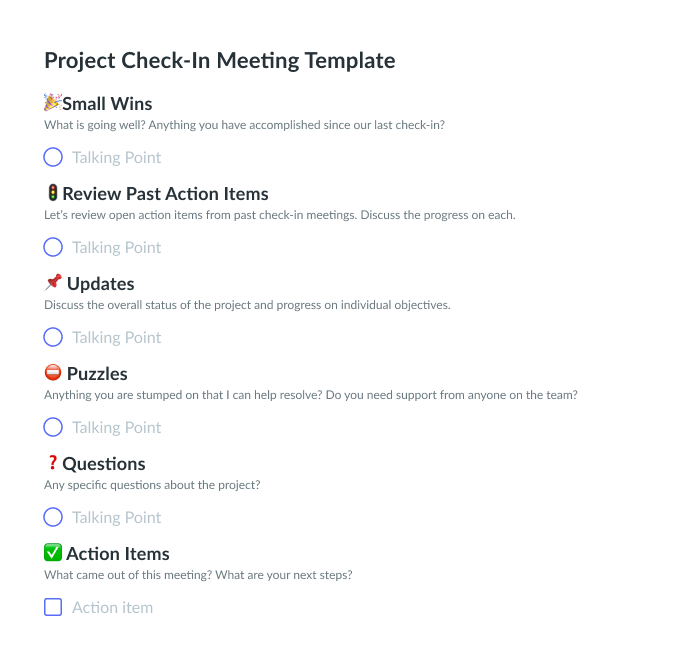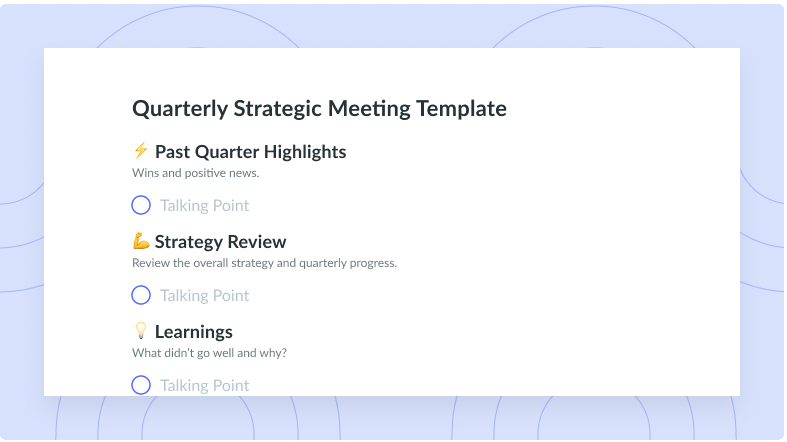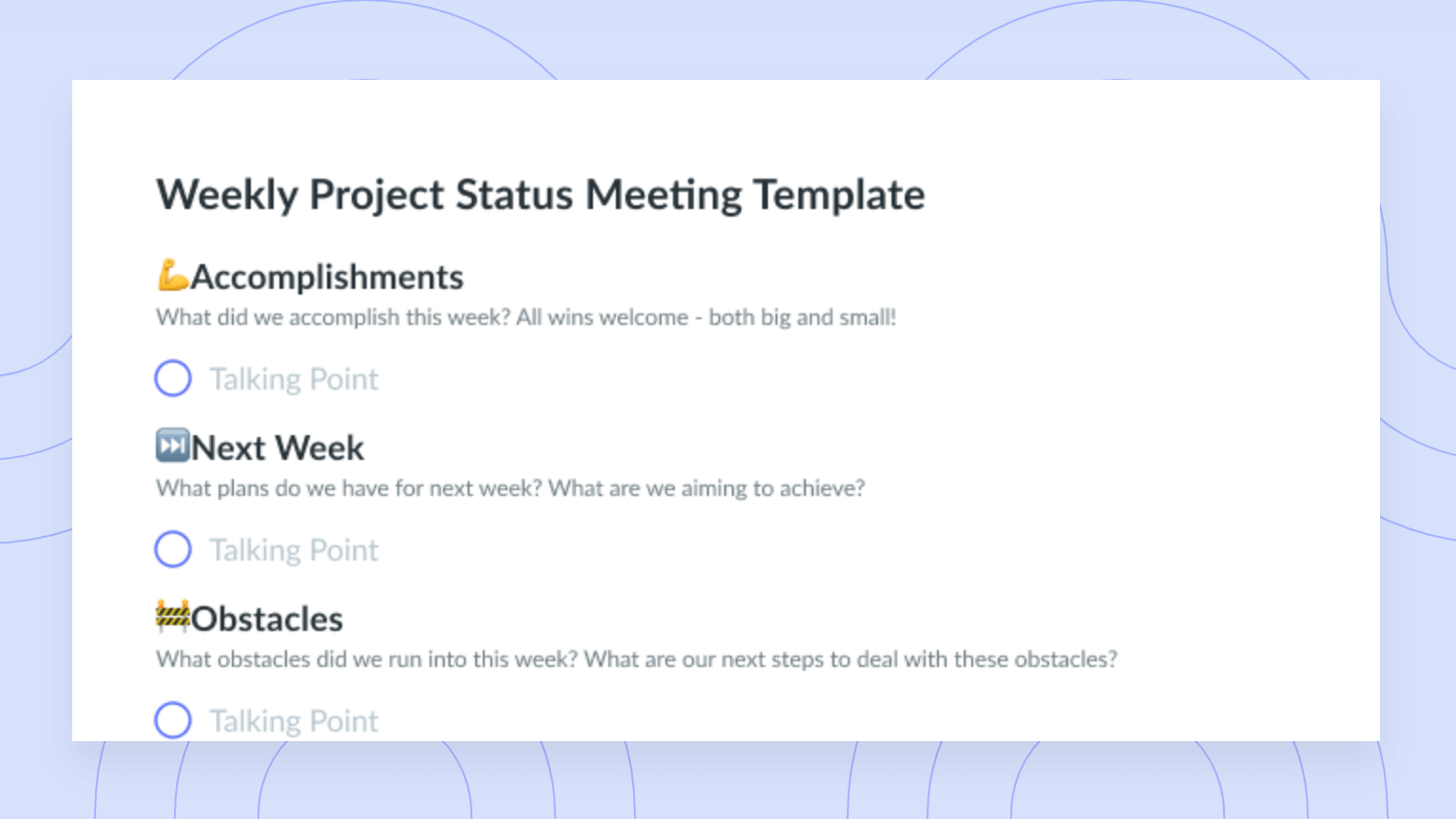The Importance of a Baseline in Project Management
Learn what project baseline management is, how to establish project baseline management, and how to track project progress and performance.
- What is project baseline management?
- How to establish project baseline management
- Tracking project progress and performance
What is project baseline management?
In project management, a baseline is a clearly defined starting point of a project. Once your team has this established, the baseline should be used to measure progress and performance. Is your team within budget or on pace to finish on time? Check the baseline!
Ultimately, the purpose of creating a project baseline is to always remain in the know of how your team is tracking. No matter the end result the team is working toward, the baseline will show you the good news and the bad news in one place.
The most common project baselines are broken down into three categories: schedule, cost, and scope.
- Before starting any type of project, you need to consider the time it will take to complete it. In this case, the schedule baseline is the approved project schedule. Its purpose is to set a projected timeline with start and finish dates that you can measure your progress against.
- The cost baseline serves as a reference point for project costs. Not to be confused with the project budget, it’s the sum of cost estimates for all of the tasks in the project schedule. They should match or be lower than the actual cost of the project.
- The scope baseline is the expected project outcome, any deliverables, and the problem they solve. This type of baseline should also include any necessary documents between the stakeholders relevant to the project.
Having all of this information sets your team up for success before the project even begins.

Managing a team?
Take control of your team meetings by having collaborative meeting notes and encouraging accountability with action items. Try a tool like Fellow!

How to establish project baseline management
To effectively manage your team’s project baseline, follow these six steps!
- Define project objectives and scope
- Develop a project plan and timeline
- Establish project resources and budget
- Identify key project components
- Set baseline targets and metrics
- Develop the project baseline plan
1Define project objectives and scope
First, your team should define the objectives and scope.
To get started, ask questions like:
- What outcome are we aiming for?
- What are our deliverables and key milestones?
- What is the business need for these deliverables, and what business problem should they solve?
From there, the team should establish the work breakdown structure (WBS), which will identify all the work that needs to be done to meet the objectives, then break the larger deliverables down into smaller ones so all team members understand the path that needs to be taken to accomplish them.
2Develop a project plan and timeline
Next up, get started on the project plan and timeline. These two are important to complete together because you can pinpoint how long each task within the plan should take to complete and then build a timeline around each. It may be in your team’s best interest to use a Gantt chart as an efficient way to visualize the project schedule baseline.
A good way to ensure everyone stays up to date with the plan and on schedule as the timeline progresses is to use a Project Check-In Meeting Template. Doing so ensures everyone is always aware of the status of an existing project while confirming all progress on a company initiative or project and maintaining the momentum of that project.

3Establish project resources and budget
From there, establish the resources you’ll need for the project and the budget you’ll need for them. Without taking the time to consider the project resources you’ll need when creating your baseline plan, there’s a good chance you’ll run out of money and time.
Carefully considering the resources you’ll need for the schedule and scope, plus the associated costs helps to avoid these failures.
Some resources you may decide the project needs could be:
- Specific software
- Other equipment
- Time
- Knowledge or new skills
- More team members
With this information, project managers will better understand how much money is needed to bring the project to life.
4Identify key project components
Once resources are identified and the costs associated, identify key project components.
When it comes to project management, components are everything else that should cross your t’s and dot your i’s. Essentially, these are any last or final details of work that will help ensure the project runs smoothly. Identifying these components will also help to know if there are any constraints to be aware of, too.
5Set baseline targets and metrics
Once you feel like your plan is solid, set targets and metrics. These targets and metrics are used to track the progress and performance of a project. Not to be confused with key performance indicators (KPIs), project metrics and targets help your team track productivity metrics like utilization, scheduling, and realization to get a better idea of what’s currently getting done and what may be behind schedule.
These can be elements like the gross profit margin, customer satisfaction, earned revenue, productivity, and return on investment (ROI).
6Develop the project baseline plan
Finally, it’s time to develop the project baseline plan. Here you’ll take all the details you’ve laid out and any feedback your team has received from key stakeholders and come up with a plan for how you’ll hit the ground running!
Tracking project progress and performance
Once the project is underway, here are some things to keep in mind as you track its progress and performance.
- Establishing project monitoring and control processes: It’s important to actively review the status of your project as it proceeds, evaluate potential obstacles, and implement necessary changes to ensure everything stays on track.
- Tracking project progress against the baseline: Keep an eye on when tasks are being completed and if your team is on track to hit goals and key milestones along the way.
- Managing baseline changes and adaptations: Your baseline isn’t set in stone, so be sure to manage the changes and adaptations that may need to occur so your team stays on schedule and within budget.
- Conducting baseline reviews and evaluations: Review and evaluate the baseline as often as necessary. This is especially important if the project spans years. Conducting these evaluations will help your team pivot to accommodate changing marketplaces.
- Assessing baseline accuracy and reliability: Things change fast in the world of project management, so periodically checking for the accuracy and reliability of the baseline can help give managers a clearer picture of progress.
- Making recommendations for baseline improvements: Sometimes when you’re right in the middle of a project is when you have your best ideas for improvement. Don’t be afraid to make these recommendations as the project progresses.
- Integrating baseline management with other project management processes: Keep your baseline in mind as you manage other project areas. Remember, the baseline is essentially your project blueprint, so it should be integrated with other project management areas.
- Using baseline management in risk management and change management: How you identify, evaluate, and prevent risks in a project that can impact your desired outcomes can come down to how you use the project baseline. The same can be said for change management, as it focuses on the people impacted by specific changes. Negative impacts can throw off the schedule and budget.
- Leveraging baseline management for project success: Your baseline is a fixed reference point to measure against and compare to your project’s progress. So don’t forget to leverage it and ensure team members know every last detail.
It’s good to be prepared!
You wouldn’t start cooking a brand new meal without checking the recipe or set sail without a compass, so don’t start working on a new project without creating a baseline. Having this baseline as an outlined starting point for your project plan will give you a better idea of how things are going when your team members are in the thick of their to-do lists. Having a baseline will also help you to change or pivot directions if needed.














![Weekly Project Check-In Meeting [Engineer Manager] Template](https://fellow.app/wp-content/uploads/2021/10/1-on-1-Accomplishments-Meeting-preview.png)












